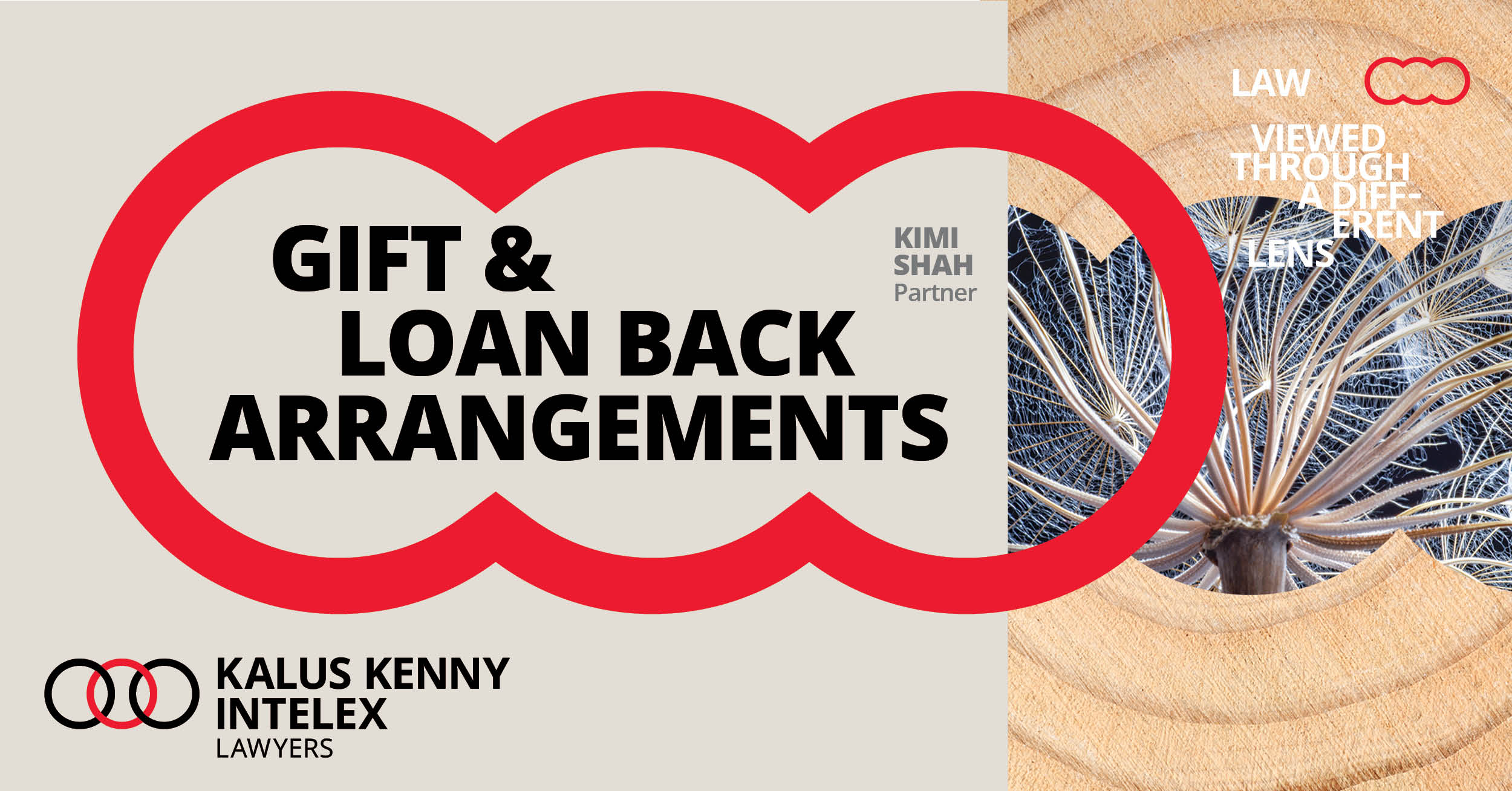Gift and loan back arrangements are controversial but have historically been popular. The popularity of these arrangements arose from the fact that it provided a mechanism to protect assets particularly in circumstances where someone is conscious of being sued or being pursued by creditors. However, a recent case of Re Permewan No. 2 [2022] QSC 114 (Re Permewan), the Queensland Supreme Court has set aside these arrangements as being invalid and unenforceable, which will have a significant impact on existing arrangements.
What are gift and loan back arrangements?
A gift and loan back arrangement is a strategy that allows individuals to protect their assets. The process of doing so usually involves a person gifting an amount (to a ‘lower risk entity’ which they also control such as a trust) which mirrors the value of the equity held in the asset they are trying to protect. The gifting is usually done through promissory note or cheque. The lower risk entity will then loan the exact amount gifted back via a loan agreement. The lower risk entity then takes security over the asset so that they can protect themselves as the lender such as by a mortgage.
For example, Fred owns a home valued at $2 million. Fred has a mortgage left of only $500,000. This would result in Fred having $1.5 million in equity. In a gift and loan back arrangement:
- Fred would gift $1.5 million to his discretionary family trust;
- The discretionary family trust would then loan the $1.5 million back to Fred; and
- The discretionary family trust would put a mortgage on Fred’s home for the $1.5 million loaned.
The perceived result of the above arrangement was, if a creditor sued Fred, the $1.5 million would not be available as the discretionary family trust had security over Fred’s home for $1.5 million.
The case
Recently, in Re Permewan, the Court set aside a gift and loan back arrangement stating that it was unenforceable. In this case, Prudence Permewan died leaving behind three adult children. In her Will she appointed her son Scott as executor and trustee, left him shares in her company and then bequeathed the rest of the estate to her family discretionary trust. The estate had an estimated value of $3 million.
The outcome of this was that the other two children were excluded from benefitting from the estate whilst their brother Scott was bequeathed the entirety. The other two children commenced proceedings for family provision on the basis that the transactions that their mother had entered into were invalid and unenforceable.
Prior to her death, Prue entered into a gift and loan back arrangement whereby she gifted, through promissory note, $3 million to her trust. The trust then loaned $3 million back to Prue, securing the loan through a mortgage. The consequence of this was that Prue’s estate value went from being worth $3 million to being worth nothing. The Court found that this transaction was invalid and unenforceable, labelling it “an elaborate web of documents”.
What will make a gift and loan back arrangement unenforceable?
Elements of the arrangement that made it unenforceable were:
- the transaction was a ‘sham’ in that there was no intention for Prue’s acts or documents to create legal rights and obligations. This meant that she never had the intention of paying back the $3 million loan and the trust never intended to enforce payment of the loan.
- the transaction was contrary to public policy as it attempted to circumvent important legislation that requires that members of a deceased family are provided for financially where they are found to be in need.
- there was no evidence that the promissory note had been delivered, which meant that the transaction was technically incomplete.
The takeaway
The Court made it clear that in gift and loan back arrangements, it will not accept illusory transactions that attempt to evade legal rights and obligations created by legislation. Further, it will not accept a party falsely conducting themselves in a way that appears to create legal rights and obligations when the opposite is intended.
What should I do now?
If you think you may have a gift and loan arrangement in place, it is important that you seek expert legal advice. Please contact Kimi Shah or Lisa George to review your existing arrangements and offer advice on protecting your assets.



